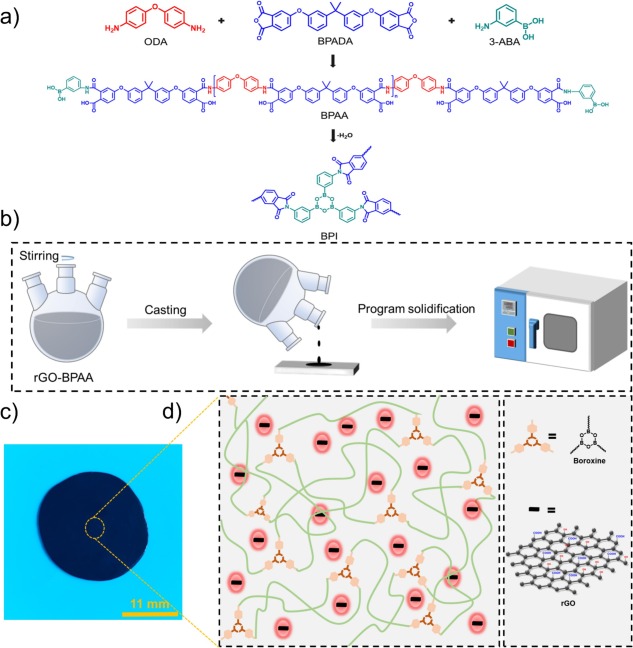Abstract
The rigid chain structure of polyimide (PI) provides exceptional mechanical strength, outstanding thermal stability, and excellent chemical resistance. However, it severely limits its self-healing capabilities, which require a high degree of chain segment mobility. Achieving both high performance and rapid self-healing in PIs is critical for applications in aerospace and other demanding environments, yet it presents a significant challenge. Here, we innovatively constructed a hierarchically dynamic dual-network in PI architecture through molecular topological design-featuring B3O3 as reversible chemical crosslinks and reduced graphene oxide (rGO) mediated hydrogenbond networks as physical dissipation units. This innovative composite structure achieves high-performance Boroxine-containing polyimide (BPI) - Tensile strength is 111.3 MPa, Young's modulus is 2.63 GPa, fracture toughness is 12.56 MJ/m3 and Td5% is 536 degrees C, while enabling record-fast, on-demand damage healing within just 5 min under simple near-infrared (NIR) irradiation. Notably, it also enables the regulation of frictional properties through light control, with a friction coefficient range of 0.277 to 0.122. By integrating photo-controlled selfhealing with intelligent friction modulation, this approach sets a new paradigm for designing adaptive smart materials capable of withstanding complex operational environments.

Keywords Plus:GRAPHENE OXIDE
Published in CHEMICAL ENGINEERING JOURNAL,Volume518;10.1016/j.cej.2025.164571,AUG 15 2025


